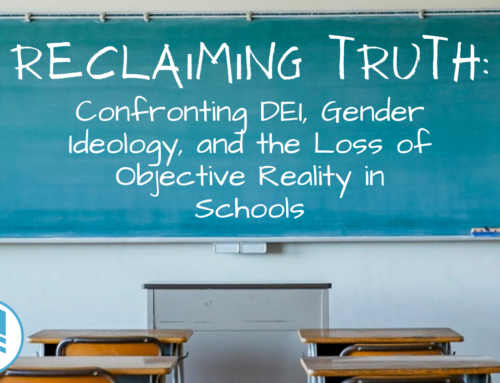
When Robert was born, his parents gazed lovingly into their youngest son’s tiny eyes. His little fingers fidgeted into a balled fist, snuggly tucked into his soft cheeks. A lazy yawn opened the rosy lips, and his parents’ hearts exploded with newfound love.
As he grew, Robert’s parents realized that he was a bit different than his brothers and sisters. The months passed, baby milestones came and went, and Robert wasn’t meeting them like his siblings had.
Then the day came. An evaluation and some tests provided the answer his parents were looking for: Robert was severely autistic.
Relief. Grief. Uncertainty. So many questions. Only parents who have received a similar diagnosis can fully understand the flood of emotions Robert’s parents experienced in that moment.
In the coming weeks, after the shock died away, the questions remained.
What did this mean for their precious boy’s future? Would he be able to experience the joy and adventure in life that they so deeply wanted to show him? Would he be able to care for himself one day?
Then there was the matter of education. Would he be able to go to a “regular school” at all? What kind of programs would he need?
Like Robert’s parents, relatively few people jump into parenthood already prepared to raise—not to mention educate—a special needs child.
Choosing the best school option can be challenging for any parent, but if you have a child with a learning disability, neurodiversity, or another developmental challenge, the task is often overwhelming. To make it easier for you, here are a few places to start when looking for a school that fits the special needs of your family.
Legalities
Special needs children have legal protections. While under federal law, every child is entitled to a free education, there are certain laws dedicated specifically to students with disabilities. The American Academy of Child & Adolescent Psychiatry outlines these laws:
- IDEA (1975, amended in 2004): This law applies to all special education services in the US. There are specific criteria that kids have to meet to qualify for special education (taken from the AACAP website):
- a serious emotional disturbance
- a learning difference
- intellectual disability
- having had a traumatic brain injury
- being diagnosed on the spectrum of autism
- vision and hearing impairments
- physical disabilities
- developmental delays (including speech and language difficulties)
- other health impairments
- Section 504 (1973): This law forbids schools from discriminating against children with disabilities. It also guarantees that reasonable accommodations will be provided within the school. A few things to note about Section 504 in comparison with IDEA:
- Generally applies to kids with less severe disabilities
- IDEA generally applies to kids with greater disabilities
- Section 504 generally applies to kids who have disabilities that do not fall under IDEA.
- Section 504 defines a disability as any impairment that substantially affects or limits the subject’s life.
- The ADA (1990): The ADA dictates that all schools accommodate special needs kids with these differences/disorders. Schools run by religious organizations are excluded from this requirement.
Classroom Types
Various classroom types are available to cater to some of the common requirements of special needs kids. VeryWellFamily offers this sampling of the different types of classrooms that children with special needs might benefit from:
- Inclusion Class – “…your child will be in a regular education class with his age peers. In addition to the regular teacher, there will ideally be a special-education teacher whose job it is to adjust the curriculum to your child’s abilities.”
- Resource Room – “…a special-education teacher works with a small group of students, using techniques that work more efficiently with a special-needs population.”
- Self-Contained Class – “…your child will be removed from the general school population for all academic subjects to work in a small controlled setting with a special-education teacher. Students in a self-contained class may be working at all different educational levels, with different textbooks and various curricula”
- Out-of-District Placement – “…an out-of-district placement places her [your child] in a specialized school specifically designed to address special learning or behavioral needs.”
It’s a good idea to evaluate whether or not you think your child can thrive in a normal school environment before considering alternative classroom styles.
Kidspot suggests, “Where possible it is often advantageous for children with special needs to attend mainstream schools to maximize inclusion, participation and social opportunities. In order to be successful at a mainstream school, there will need to be an established special needs support program and an active approach to disability support.”
From specialized classroom types to homeschooling, your child has several options for getting a solid education that caters to their individual learning styles and ability.
Decisions, Decisions
So, you’ve realized your child has special needs. You understand the legal protections for their education. You even have a general idea of what types of classrooms might be available to your child. How do you make your final decision?
How to Decide
You’re passionate about offering your little one an excellent school to fit their specific needs, but how are you supposed to sift through all of the options? “That’s a question that needs to be answered based on your child’s particular, individualized needs,” states VeryWellFamily. They then outline a few helpful tips:
- What setting works best for your kid? What settings keep them from excelling?
- Does your child have friends where they’ve been until now? Was their previous school environment friendly or hostile?
- Does your child function best with structure and routine, or do they prefer experiencing different teachers and kids?
- What are their strengths and weaknesses? Do they have one or two areas they could use specific academic help? Or is their entire schooling experience a struggle?
The School
If you think you’ve identified the best education model for your child, it’s time to choose a specific school. When you think you’ve found the right place for your kid, Kidspot suggests that you ask the school questions about:
- “The size of the school and individual classes
- Their experience in working with children with disabilities
- Any physical access issues
- Their available support programs”
You should also consider:
- Transportation options. Will this be a regular problem, or is there a good transportation option that works for your child’s specific needs?
- Access to alternative environments (like the library) if your child doesn’t do well in pre-determined environments (such as the playground).
- Any evaluations or testing that needs to be done before your child can access the school and its special needs accommodations.
KidSpot concludes, “For a successful, inclusive and positive school experience, parents will need to have a collaborative relationship with the school and teachers and this will be a key consideration in looking at potential schools.”
For instance, Southern Maryland News suggests a few more tips to help you identify the perfect school:
- Look for flexible administrators – “Seek out schools where the administration understands the unique needs of your family and can quickly rally around you during enrollment or if you unexpectedly need to disenroll your child…Additionally, ask if the school staff is flexible with parent-teacher meetings; for example, can they be conducted virtually or through email instead of in-person?”
- Take advantage of all interviews – “Take advantage of virtual interviews for both parent and student. Face-to-face meetings, even when done virtually, can help the educator learn a great deal about your child, instead of relying on written records…During the interview, ask: ‘What does my child need to be successful and what can this school give them to be successful?’”
- Prepare to discuss financial obligations – “Know what type of financial assistance is available…Be direct and transparent about your situation when speaking with school administrators.”
- Communicate your child’s unique situation – “Explain your specific situation to prospective schools – and choose one that offers a safe, nurturing environment and social-emotional resources beyond academics.”
- Connect with the school community – “Does the school have a parent association, or afterschool groups, or a summer program for you and your child to join? If so, get involved as early as possible, which will help both you and your child to meet classmates and their parents – and quickly feel a part of the school.”
Meanwhile, The 74 suggests that parents look for specific attributes such as accessibility, inclusion, collaboration, accountability, and a variety of quality resources. “…it’s a good idea for parents to identify someone in the school—a teacher or administrator, maybe—who is open to conversations about equity and to develop a relationship with that person.”
The Bottom Line
Let’s return to Robert.
Robert’s parents ultimately decided that homeschooling was the best choice to meet his specific needs. As a school choice, homeschooling is a wonderful, inclusive, loving environment that encourages many special needs children to thrive and learn.
Robert did well homeschooling, and while he’ll never meet the same academic standards as his siblings, he thrived under the loving care of his parents. He found his specific strengths and now he’s flourishing in life, enjoying every moment.
Like Robert, your child can thrive.
Every kid will leave an individual stamp on this world in their own unique way. It’s merely our job to offer them the best opportunities and tools to do that. School choice helps make your job easier by opening the doors of possibility wide to your little one.
With careful thought and research, it is possible to choose the right education option for your kid, whatever their learning challenge.





[…] During a 2012 panel on national education policy hosted by Columbia University’s Teacher College, participants agreed that, “Most major changes to American schools have resulted from federal law, jurisprudence or policy.” They cited examples such as the federal court-ordered desegregation of Boston public schools in the 1960’s and the integration of disabled students with non-disabled students under the Individuals with Disabilities Education Act. […]
[…] you’re searching for a school right now, look for one where the teachers understand this concept. Finding open-minded educators who will […]
[…] topics such as learning styles or special education needs will aid you in your desire to be the best teacher you can be for them. Whether you’re looking […]
[…] out more resources on NWEF’s blog, including how to choose the right special education option and how ESAs might help […]
[…] at some point, you’ll have to face the daunting decision of how to educate them. Choosing the best school option can be challenging for any parent. However, if you have a child with a learning disability, […]